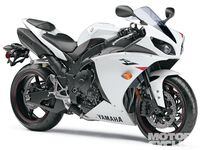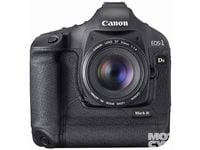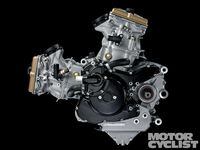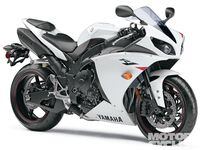Q I've been reading Motorcyclist for years, and as a painfully amateur photo-grapher marveling at the shots you guys run every month. Since the recession has cut my hours at work to the point where I have some time to fill, I've been thinking about trying to shoot a little bit at some local track days. With any luck at all, I could earn a few extra bucks at something I'd probably do for nothing anyway.
I already have a Canon EOS-1Ds Mark II with an EF 70-200mm f/4L lens, an EF 24-105mm f/4L, a Speedlite 580EX flash and an '09 Apple Mac Book Pro, plus a few basic filters and a bag and such. Aside from talent, what else do I need to shoot magazine-quality action? I'm no threat to guys like Tom Riles, Brian J. Nelson or Kevin Wing, so is there any chance one of those guys might be willing to share a few photons of knowledge with a recreational shooter looking to move up a notch?
Jon Stansberry
Concord, CA
A As it turns out, Kevin Wing had just enough time to fire off a few photons of enlightenment after defrosting his EOS arsenal from the snowy 2010 BMW R1200GS intro/Donner Party reenactment. "Do you really want to spend countless hours aiming big lenses at sweaty middle-aged men in sweatier leather? That said, you definitely have some awesome gear there. For track photography, the longer the lens, the better. Most pros shoot 300-600mm. Judging from your equipment, a 300mm f/4 would be a great place to start. Longer lenses are more expensive. So are faster ones-small f values-that help during the golden hours near dawn and dusk when the light looks best. A Canon EF 300mm f2.8 telephoto lens goes for about $4500, while you can pick up an EF 300mm f4 for about $1300. Beyond that, a common mistake photo-graphers make is shooting at unnecessarily high shutter speeds. This freezes the tires, wheels and the background, taking the feeling of speed out of your photos. You might start with pan and 3/4-front shots of bikes in a relatively slow corner. Set the shutter at 1/250th of a second or slower with a 200-300mm lens. Don't forget: One of the key ingredients to success is the same way you get to Carnegie Hall: practice, practice, practice! Blast away and don't forget to have some fun with it."
Cavalli Reali
I'm trying to find out what's the real horsepower of the Ducati 1098 versus the 1198. One book has the 1098 at 155 and another has it at 170. Tell me: What's the real horsepower?
Mike Griffith
Baltimore, MD
The main difference between manufacturers' claims and the numbers published in this and other magazines is the former are measured at the crankshaft while the latter are measured at the rear wheel. Typically there is approximately a 15 percent variation between the two owing to friction losses from the gearbox, drive chain, etc.
As for your question about the two Ducati twins, the Italian manufacturer claimed 160 crankshaft horsepower and 90.4 lb.-ft. of torque for the '07 1098, while our testbike made 137.9 rear-wheel horses and 77.5 lb.-ft. according to our in-house SuperFlow CycleDyn dyno. Likewise, Ducati specs grant the 2010 1198/1198S 170 crankshaft bhp and 97 lb.-ft. of torque, whereas the 1198S we tested last issue cranked out 145.1 rear-wheel bhp and 79.6 lb.-ft. of torque.
Though correction factors written into their software aim to keep dyno numbers consistent, there are enough variables between different brands, ambient conditions and dyno operators-not to mention "production tolerances" between one bike and the next-to muddy the waters. If you're still confused, always compare data from the same reliable source-like us.
OMG MPG **
At first I thought there was a misprint in your Aprilia RSV4R vs. Yamaha YZF-R1 comparison (MC, April), but when I got to "Doin' Time" I realized it was no mistake. The R1 gets just 23 mpg-are you serious? That's worse than a 400-horsepower, 3000-pound Corvette! I am at a loss for words. Are sportbikes the new equivalent of SUVs?
**Luca Martino
Fremont, CA
Sorry to burst your bubble, but our mileage figures aren't generated the same way the Environmental Protection Agency generates theirs. The city/highway numbers on a new car's window sticker are generated in a lab by rolling the car onto a device that looks something like a dyno, not on the road. Consumer Reports found that 90 percent of the cars they tested averaged 9 percent fewer miles per gallon than EPA estimates. According to the EPA, a 3324-lb., 436-bhp 2010 Corvette Grand Sport gets 16 mpg around town. Apply that 9 percent reality correction just for the sake of argument and you're looking at something like 14.5 mpg. Meanwhile, our 146-bhp, 477-lb. 2010 R1 got 22 mpg with its hair on fire-which was most of the time-averaging 25 mpg under slightly more subdued conditions. Your mileage may vary.
















/cloudfront-us-east-1.images.arcpublishing.com/octane/VZZXJQ6U3FESFPZCBVXKFSUG4A.jpg)
/cloudfront-us-east-1.images.arcpublishing.com/octane/QCZEPHQAMRHZPLHTDJBIJVWL3M.jpg)
/cloudfront-us-east-1.images.arcpublishing.com/octane/HXOUJXQWA5HBHGRO3EMJIGFMVI.jpg)

/cloudfront-us-east-1.images.arcpublishing.com/octane/3TIWWRV4JBBOLDVGRYECVVTA7Y.jpg)
/cloudfront-us-east-1.images.arcpublishing.com/octane/KIX5O23D5NAIBGFXBN3327DKZU.jpg)
/cloudfront-us-east-1.images.arcpublishing.com/octane/7GJYDUIPXRGMTMQKN6ONYOLBOU.jpg)
/cloudfront-us-east-1.images.arcpublishing.com/octane/MUQLOVLL2ZDGFH25ILABNBXKTI.jpg)
/cloudfront-us-east-1.images.arcpublishing.com/octane/TNOU5DNE2BC57MFPMGN2EIDXAM.jpg)
/cloudfront-us-east-1.images.arcpublishing.com/octane/GTCXACQGJ5HAPDTGWUQKDEH44E.jpg)
/cloudfront-us-east-1.images.arcpublishing.com/octane/S35YGSEMEZB4BLTDJTSZPF4GLA.jpg)
/cloudfront-us-east-1.images.arcpublishing.com/octane/5UOT6HPX2JFMRJAX6EH45AR4MQ.jpg)
/cloudfront-us-east-1.images.arcpublishing.com/octane/OKWOJWAKP5EP3OACCRRWPCIX2Q.jpg)
/cloudfront-us-east-1.images.arcpublishing.com/octane/2WF3SCE3NFBQXLDNJM7KMXA45E.jpg)
/cloudfront-us-east-1.images.arcpublishing.com/octane/G4MG6OUCJNBSHIS2MVVOTPX65E.jpg)
/cloudfront-us-east-1.images.arcpublishing.com/octane/IIGGWFOTOJGB7DB6DGBXCCMTDY.jpg)
/cloudfront-us-east-1.images.arcpublishing.com/octane/QSTCM6AVEZA5JJBUXNIQ3DSOF4.jpg)
/cloudfront-us-east-1.images.arcpublishing.com/octane/U4I7G625B5DMLF2DVIJDFZVV6M.jpg)
/cloudfront-us-east-1.images.arcpublishing.com/octane/B6XD6LS6IVCQPIU6HXDJSM3FHY.jpg)
/cloudfront-us-east-1.images.arcpublishing.com/octane/ICL63FEDDRDTTMINYICCEYGMDA.jpg)
/cloudfront-us-east-1.images.arcpublishing.com/octane/FCGZHQXRBZFLBAPC5SDIQLVF4I.jpg)
/cloudfront-us-east-1.images.arcpublishing.com/octane/WNOB6LDOIFFHJKPSVIWDYUGOPM.jpg)

/cloudfront-us-east-1.images.arcpublishing.com/octane/X33NU3E525ECRHXLNUJN2FTRKI.jpg)